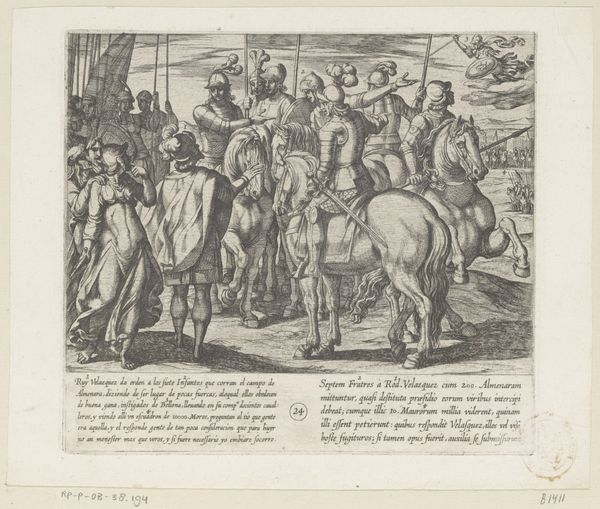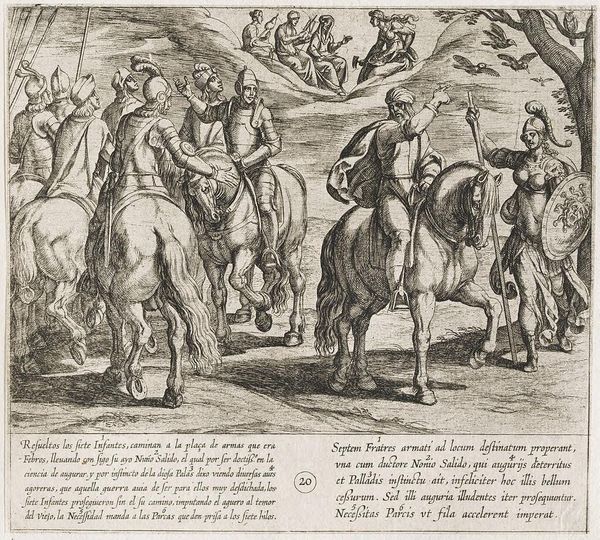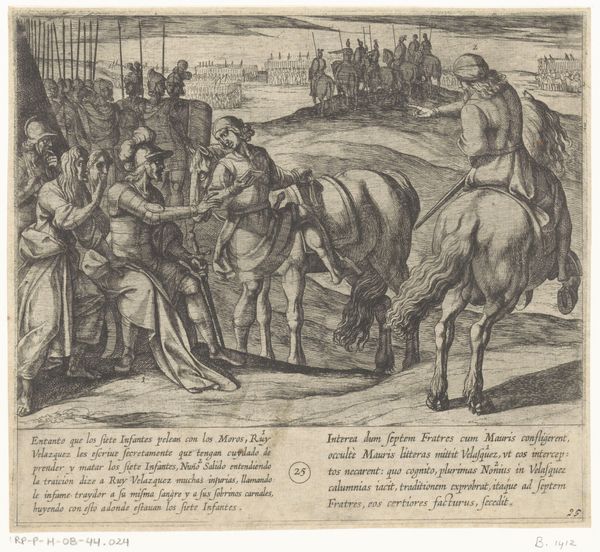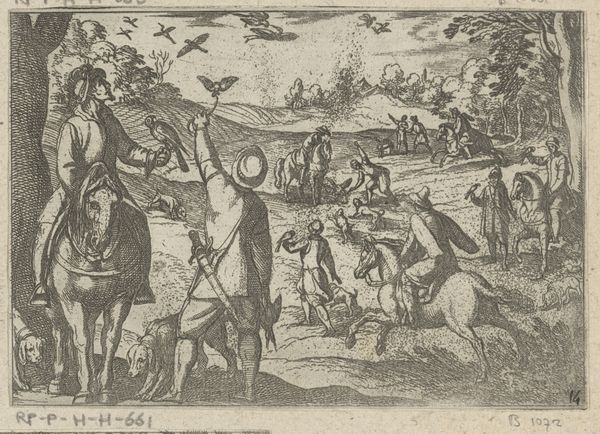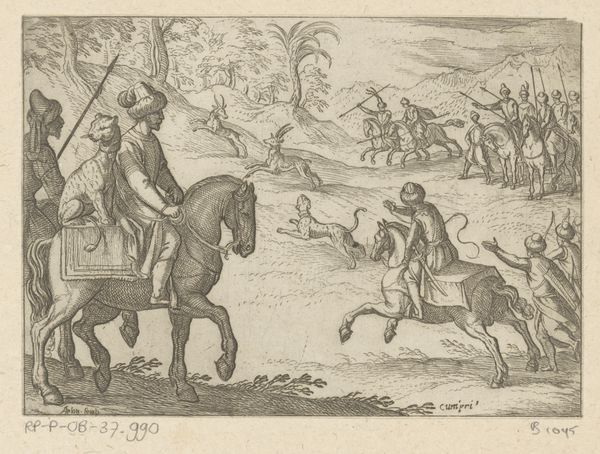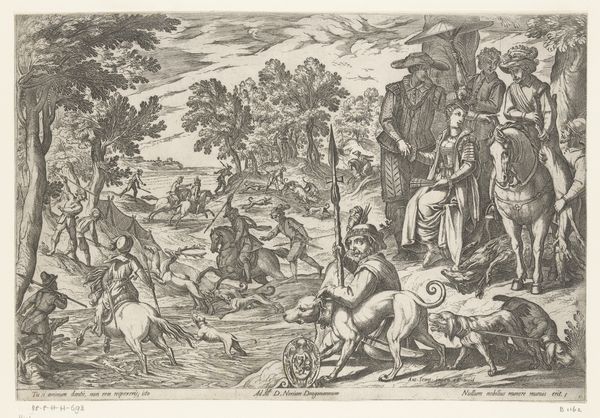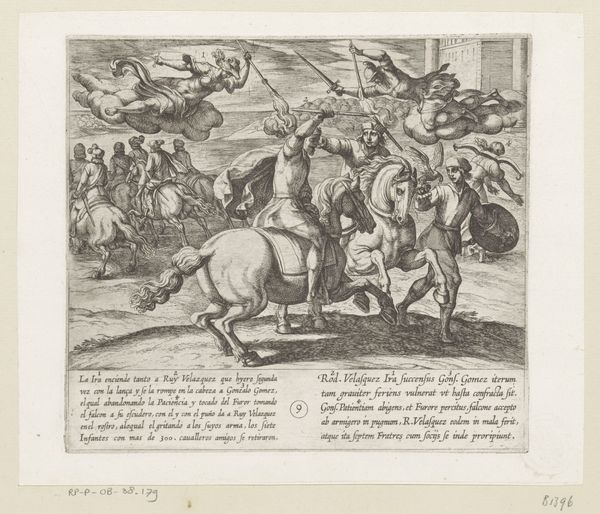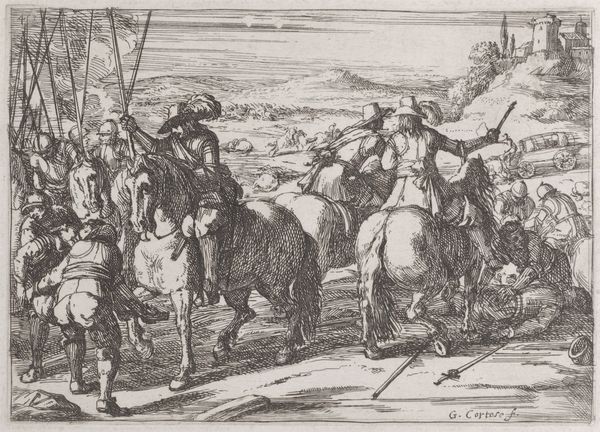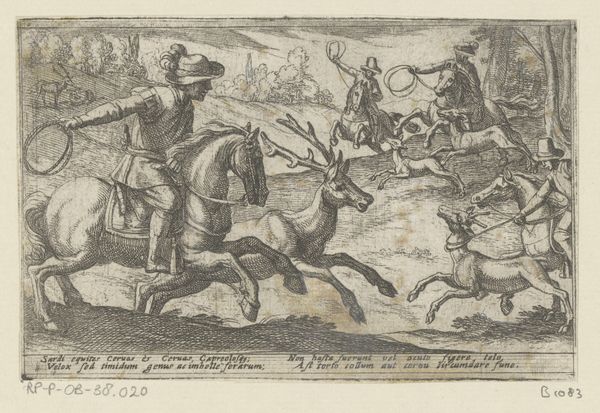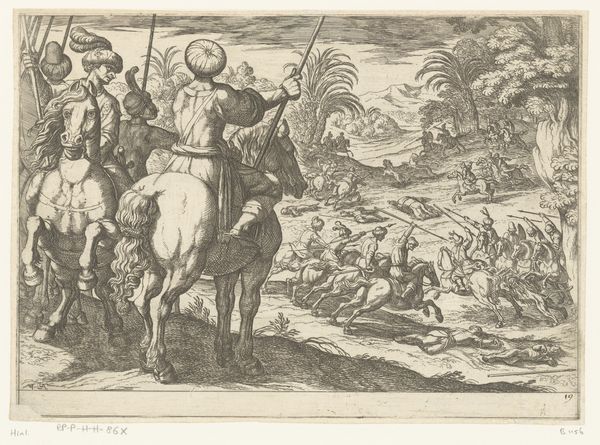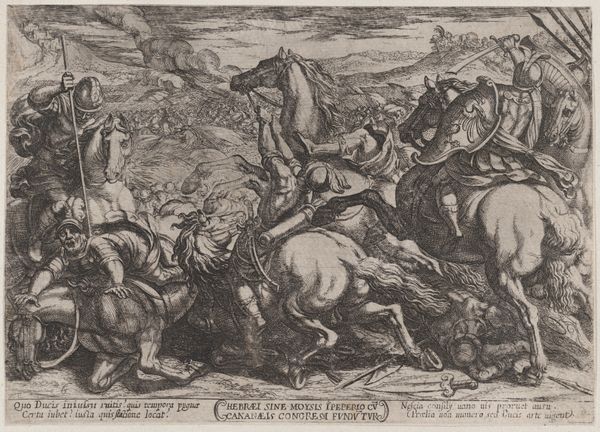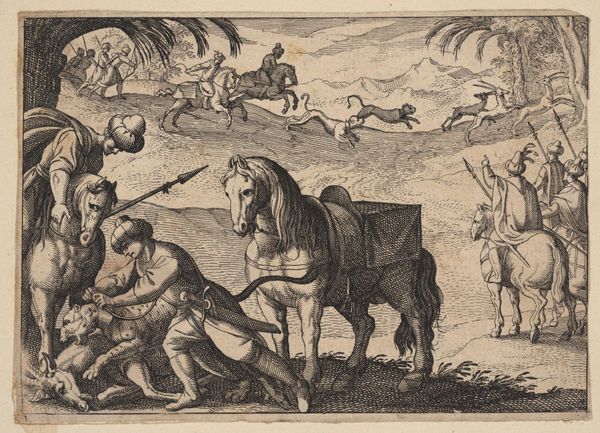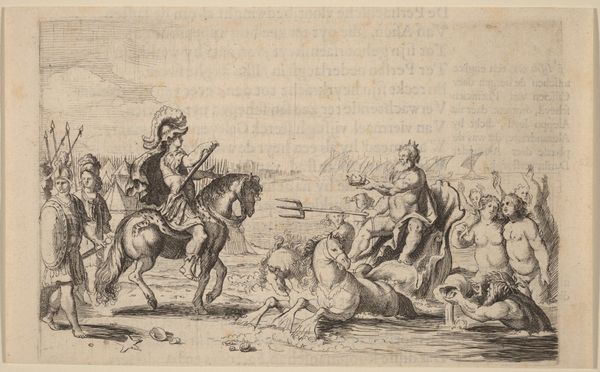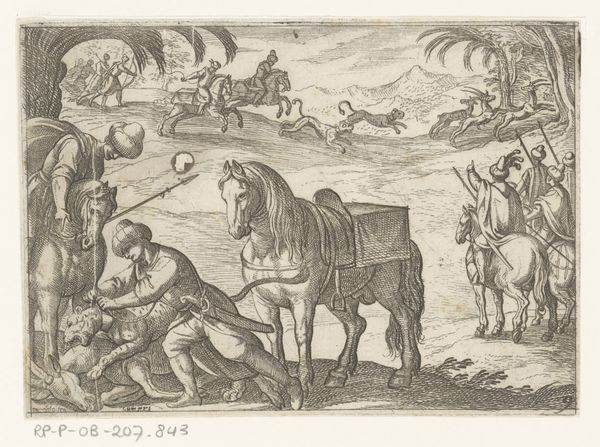
Nuño Salido ziet slechte voortekenen voor de zonen van Lara in deze oorlog 1612
0:00
0:00
print, engraving
#
portrait
#
baroque
# print
#
old engraving style
#
figuration
#
line
#
history-painting
#
italian-renaissance
#
engraving
Dimensions: height 185 mm, width 206 mm
Copyright: Rijks Museum: Open Domain
Curator: Here we have "Nuño Salido ziet slechte voortekenen voor de zonen van Lara in deze oorlog," an engraving by Antonio Tempesta, created in 1612. It’s part of the Rijksmuseum's collection. Editor: My first impression is one of foreboding. The figures are so tightly rendered and the landscape feels sparse, enhancing this overall sense of ominous stillness before some major conflict. Curator: Indeed. Technically speaking, Tempesta utilizes line engraving to build up a dense network of strokes. It’s this technique that lends the image its descriptive precision and contributes to that pervasive feeling of unease. The contrast created through these very fine, precise lines emphasizes details within the armor and musculature. Editor: It is also important to examine this print beyond its visual design. Consider the socio-political implications of depicting such a grim outlook. The historical context suggests these men likely faced tremendous pressures due to political conflicts of the era. In this artwork, the act of prophesying, done by Nuno Salido, is rendered almost performative in this rendering. What cultural expectations might have influenced this type of story-telling, and were they received similarly by diverse groups of people at the time? Curator: It's a good question. Within the language of Baroque art, which this piece flirts with through its dramatic composition, we find recurring allegorical figures. The female figure with her spear can be interpreted as either Athena, Minerva, or even just Bellona, the Roman goddess of war. Editor: Seeing those robed figures hovering above— are they the deities deciding the outcome? It lends a palpable sense of anxiety. To my sensibilities, the symbolic figures introduce gender and the artist asks us to consider how traditional masculine identity is defined by concepts like military engagement and patriarchal structures. Curator: Certainly, this intricate work showcases Tempesta's mastery of engraving while telling a compelling story. It demonstrates an awareness of classical conventions that permeated visual culture at that moment. Editor: Ultimately, by weaving art historical rigor together with social contextualization, we hopefully unlock something new and invite further investigation into the cultural significance behind pieces like these.
Comments
No comments
Be the first to comment and join the conversation on the ultimate creative platform.
